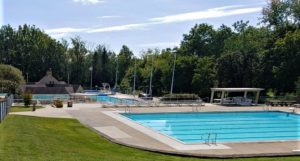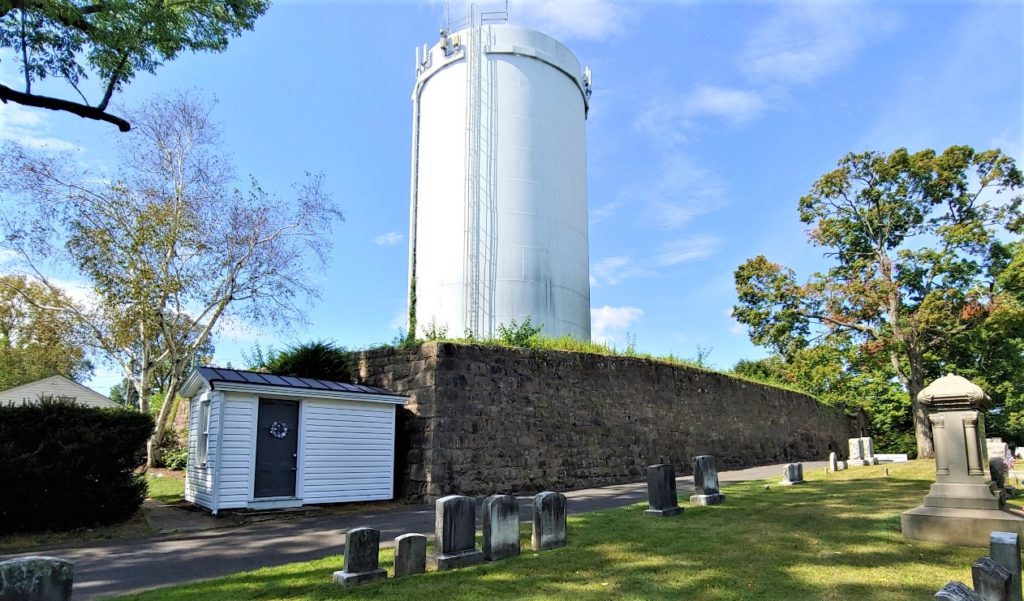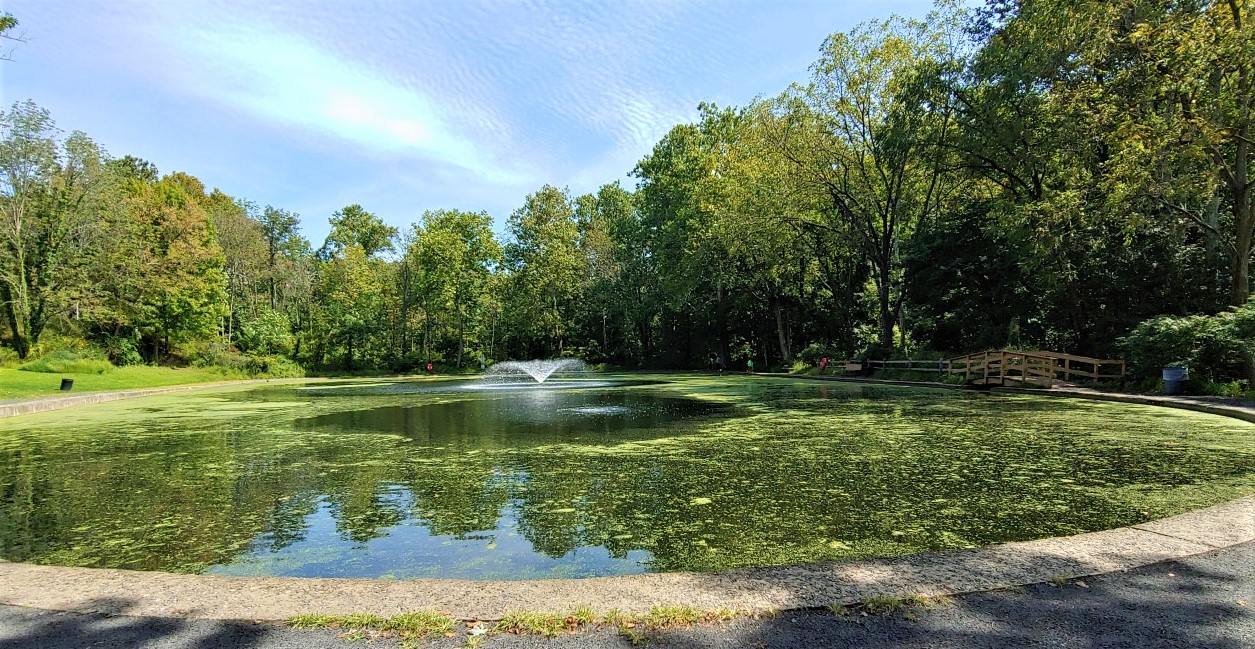Doylestown’s great water war of the 1800s.
In Bucks County, you can encounter history even when you’re not looking for it.
Not so long ago I joined my grandchildren at Fanny Chapman Memorial Park in Doylestown where they are pool members. After splashing around Margaux, 4 at the time, says to me, “I want to show you something special, Baby Pop Pop. Follow me.” Taking my hand and accompanied by older brother Dashiell and mom Genevieve, she led me across the pool’s parking lot to an overlook. She pointed down the slope to a meandering stream framed by dense folliage and trees with gnarled roots piping the water. “That is pretty special, Gaux Gaux!” I exclaimed. She beamed in a big self-satisfied smile. Dash insisted I follow him on a scramble over the rugged creek bed, heading upstream to something “even more special,” as he put it. We reached a high earthen berm with a concrete spillway that held back a large pond with a fountain. No doubt this was the power source for a long-ago grist mill, I conjectured. Dash and I used sturdy vines, fancy footwork and a hand from Genevieve above to extricate ourselves from the gulley. Archival research later led me to the story behind the reservoir: a red-hot water war in Doylestown.

The year was 1851.
The way of life in the borough of 1,005 hardy souls was to make daily trips to the municipal well pump at Court and Main Street, draw water and lug it back to homes and businesses. A few visionaries in town conceived a better means: build a municipal drinking water system to connect all the buildings. That seemed preposterous to others in town. With such a small tax base, how could Doylestown possibly afford it? Nevertheless, the town council married into the idea, motivated by disastrous fires in neighboring towns where bucket brigades failed. Fire hydrants with a limitless, spring-fed water supply system were the answer. The council also envisioned better hygiene and rising property values in the county seat. Everyone would benefit.
At least that was the thinking when a consortium of businessmen headed by Councilman W. T. Rogers bought the pond with its grist mill (since demolished) from the estate of Sandham Stewart. They believed the pond’s springs could be tapped and pumped uphill through an iron pipeline to a hilltop basin to be built in a vacant area of the Doylestown Cemetery. From there, a network of pipes would spread drinking water into the borough.

Council representatives visited water plants in Burlington City, Mount Holly, Trenton, Camden, Philadelphia and Norristown to determine the best plan. In the late fall of 1851, the council hired a Philadelphia contractor to get construction underway the next year. Before work could get very far (only the basin was completed), there was an election in which anti-water candidates soundly defeated the pro-water council and put a screeching halt to further work. They viewed it as too costly and benefitting only select property owners.
The matter lay fallow for the next 17 years. Said one wit in rhyme, the council “built a basin on the hill, then waited for the rain to fill.” Still, Councilman Rogers and his investors did not sell off the mill pond. Rogers believed that some day it would be needed for the growing borough.
Sentiments favoring public water began to shift in the 1860s. A well-publicized study by physician John Snow in London traced a cholera outbreak in 1854 to the pump handle of a municipal well. Health concerns plus the convenience and need for water lines in a growing
Doylestown began to hold sway. “Slowly the mossbacks acquired some foresight,” declared local historian Webster Grim. In 1869, citizens elected a new “pro-water” council that amended the borough charter so officials could borrow $35,000 to complete the job. That awakened renewed opposition. On June 15, taxpayers rallied at the courthouse to oppose “extravagant” public debt. Opponents argued the best way to “scotch the snake” would be to stop the council from selling bonds to pay for the system. To that end, they sought an injunction in county court. Before the court could take any action however, the pipes were installed, automated pumps put in place, fire plugs hooked up and water turned on. Total cost: $32,000 – $3,000 less than anticipated.
Recalled Doylestown resident and historian W. W. H. Davis, “When council came to put the water in the dwellings and places of business, the men who had so violently opposed its introduction seemed almost to ‘tumble over each other’ in their anxiety and haste to have it in their premises first.” The town didn’t go bankrupt either. The borough in fact cashed in. As Davis put it, “The enterprise was every way successful, and pays 8 or 10 percent on the investment.”
Sources include “History of Doylestown, Old and New” by W. W. H. Davis published in 1904; “Historical Sketch of the Doylestown Democrat, 1816-1916″ by Webster Grim in the Doylestown Historical Society archives. Thanks also to society senior archivist Milt Kenin for providing voluminous information on the water war.

